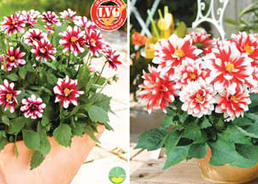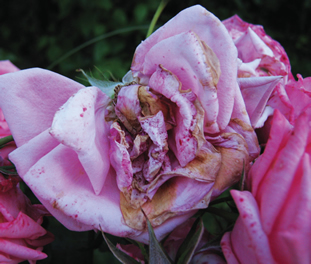Featured Past Articles
Introduces Next Generation Packaging Solution
 Packaging might be the unsung hero of the fresh produce industry. It might not be the sexiest part of the supply chain. It is a sector that might be perceived – wrongly – as a less glamorous component of the supply chain. But without adequate solutions that work up and down the chain, produce will never arrive for presentation at the right quality. However, behind the scene as Mr. Masila Kanyingi found out in a thirty minutes tour of Silpack Industries Ltd, there exists a wealth of innovation and dynamism within freshproduce packaging. Silpack the introducers of SoliQ brand in Kenya has been exploring innovative methods to boost sustainability, increase efficiency, reduce costs and improve packaging as a marketing medium. The newest kid in block from their R&D department is “i pack”, the next generation packaging solution as Mr. Parit Shah, a Director with Silpack Industries Ltd, proudly refers it.
Packaging might be the unsung hero of the fresh produce industry. It might not be the sexiest part of the supply chain. It is a sector that might be perceived – wrongly – as a less glamorous component of the supply chain. But without adequate solutions that work up and down the chain, produce will never arrive for presentation at the right quality. However, behind the scene as Mr. Masila Kanyingi found out in a thirty minutes tour of Silpack Industries Ltd, there exists a wealth of innovation and dynamism within freshproduce packaging. Silpack the introducers of SoliQ brand in Kenya has been exploring innovative methods to boost sustainability, increase efficiency, reduce costs and improve packaging as a marketing medium. The newest kid in block from their R&D department is “i pack”, the next generation packaging solution as Mr. Parit Shah, a Director with Silpack Industries Ltd, proudly refers it.
Masila: The flower industry has been yearning for quality packaging solutions; briefly discuss your efforts to quench their thirsty.
Parit: Over the past few years, we have recognised that growers have invested heavily in selection of the right variety and the best production practices for quality production. However, today the bottom line has become more dependent on ensuring quality produce reaches the market in the same quality. To ensure that our customers maintain the same quality throughout the cold chain, Silpack Industries Ltd introduced the SoliQ branded cartons, printed SFKs and other branded packaging products. However, despite this advancement in technology, some customers continued to prefer the traditionally constructed box using relatively weaker paper. This compelled Silpack Industries Ltd R&D department to engage into further innovation to ensure these growers still enjoy a strong box all through the cold chain. The fruits of these efforts are “i pack”, the next generation packaging solution.
Masila: Briefly discuss i pack, the products it covers and how it works.
 Tanzania Refuses to Sign EU Trade Pact
Tanzania Refuses to Sign EU Trade Pact
Tanzania’s refusal to sign a new trade deal between the East African Community (EAC) and the European Union (EU) has generated anxious reactions. If news reports are to be believed, plans had been made for a signing ceremony to take place during the just-concluded United Nations international conference on trade in Nairobi. In the event, the Kenyan foreign minister said more time would be required to rally all the countries around the trade deal.
While opting out of the joint EU-EAC
Economic Partnership Agreement, Tanzania cited the economic and constitutional uncertainties arising from British voters’ decision to leave the EU. Tanzania argued that, with the exit of its core market from the EU, it had little to gain from the partnership agreement negotiations, and that signing up would harm its “national interest”.
As much as Kenya may feel short-changed by Tanzania’s last-minute decision, it is probably an opportunity to get things right. It is important that the EAC member states take time to reflect afresh on the Economic Partnership Agreement negotiations so as to come out with a better deal.
BREEDERS BRIEFS
“No one thought bi-colored flowers would become popular”
 “A couple of years ago, no one would have thought that bi-colored or color changing flowers would become popular. Now, they are hot all over the world”, says Yoav Scholz of GGG Grünewald, a breeder and propagator of bedding and balcony plants.
“A couple of years ago, no one would have thought that bi-colored or color changing flowers would become popular. Now, they are hot all over the world”, says Yoav Scholz of GGG Grünewald, a breeder and propagator of bedding and balcony plants.
However, not only is the demand for colors constantly changing, so are the genetics of many traditional varieties. “When breeding new varieties, we need to take into account the entire production chain from the cutting, growing, logistics and the finished product from our customer to the retail. A good example to illustrate this trend is with our Dahlia ‘Starlias’ series. We are always workingto keep this ‘old plant’ attractive by adapting to new trends quickly.”
More open to bi-colors
According to Scholz, people are more open to new colors at the moment. “All over the world, we notice an increase in demand for striking colors and especially the bi-colored varieties. Approximately five years ago, when we just introduced the Dahlia “Starlias’ series, there was no market for bi-colored varieties, but now, our bi-colored dahlias are the top sellers in the ‘Starlias’ series,” says Scholz.
 Botrytis is one of the most damaging pathogens with stems, leaves, flowers, fruit and seedlings all being potential victims. Many growers are familiar with the symptoms of Botrytis, but for some, the first encounter with this pathogen results in severe plants losses therefore early detection and control are vital if the disease is to be prevented from rapidly spreading though a crop.
Botrytis is one of the most damaging pathogens with stems, leaves, flowers, fruit and seedlings all being potential victims. Many growers are familiar with the symptoms of Botrytis, but for some, the first encounter with this pathogen results in severe plants losses therefore early detection and control are vital if the disease is to be prevented from rapidly spreading though a crop.
While Botrytis is a formidable pathogen, it is also the same fungi which is employed by some wine makers and was even given the name ‘The Nobel rot’ for its ability to concentrate sugars and impart a particular flavor to late harvest grapes. Wine makers in many areas of the world make use of Botrytis infection of their grapes to produce a sweet, high quality wine, which commands high prices. Despite this beneficial use of Botrytis, it is a disease, which plagues commercial and hobbyist growers alike, and one that affects virtually all of the crops we grow hydroponically.
Botrytis symptoms
Plants can be attacked at any stage of growth, from tiny seedlings to large, mature plants, but new succulent growth, freshly injured tissues and ageing or dead foliage are favored by this disease. Botrytis usually first appears as lesions on leaves and stems which quickly produce a characteristic grey/brown furry spore development which resembles a pile of ash - hence the name ‘grey or ash mould’. As the disease progresses the lesions continue to grow and encircle stems and leaf petioles and will eventually cause plant collapse. Fungal spores can also develop on flower petals, particularly under growing conditions where condensation has been forming and humidity levels are high.
 If you ask Bayer East Africa management what is the main difference between their company’s business model and that of most other players in the market for Agrochemicals, they will answer “While the traditional business model in this market is product driven and supply-pushed, ours is the exact opposite: Customer-driven, demand-pulled”. While Bayer East Africa is certainly not the only company to have such business model, it is true that this is their business model, reflected in their strategy and moves in the market. With a focus on emerging countries and niche markets, Bayer East Africa manages a portfolio of many active ingredients.
If you ask Bayer East Africa management what is the main difference between their company’s business model and that of most other players in the market for Agrochemicals, they will answer “While the traditional business model in this market is product driven and supply-pushed, ours is the exact opposite: Customer-driven, demand-pulled”. While Bayer East Africa is certainly not the only company to have such business model, it is true that this is their business model, reflected in their strategy and moves in the market. With a focus on emerging countries and niche markets, Bayer East Africa manages a portfolio of many active ingredients.
In well attended seminars on their products, this was well seen. Speaking to the growers, Mr. Leonard Kipchumba, said, “Bayer East Africa is focused on helping its customers cultivate business growth through the development, marketing and distribution of innovative, high quality chemical and nonchemical solutions for today’s dynamic agro science marketplace”.
The start of the seminar focused on two trusted fungal control products that have been in the Kenyan ornamental market for some time. Mr. Kipchumba highlighted that Luna Traguility, whose unparalled efficacy on the most problematic diseases goes beyond the achievements 0f today’s fungicide with improved quality, longer vase life, less waste and increased marketability. “Luna likes to work on a broads spectrum of foliar diseases giving excellent control of the powdery mildew species and botrytis, he added.
Read more: Bayer East Africa Holds Country Wide Seminar for Growers
Russia with its vast territories and different weather conditions of many regions where the production of their own flowers and ornamental plants is unprofitable is still the largest consumer and importer of flowers.
The experts include it in the top six leading countries in consumption and import of all kinds of cut flowers after the USA, Germany, the Netherlands, Great Britain and France.
Growth in sales of cut flowers in Russia has been constantly increasing in recent years and has grown from 938 million pcs. in 2005 to 1.75 billion pcs. in 2014. The amount of flower sales according to different analysts accounted for over 4 billion USD where 90% is import.
The main suppliers of flowers are the Netherlands (44% of the market) and South American countries. Colombia and Ecuador supply almost half of all cut flower (Ecuador: 36%, Colombia: 13%).
The largest share of imported flowers is sold in Moscow. According to experts the sales market here accounts for 17.5 to 23% of the total sales in Russia. Moscow is followed by Moscow region and St. Petersburg,18% and 13% respectively. As to the structure of cut flower import, rose ranks first – 43%. It is followed by chrysanthemums and carnation, 22 and 16% respectively. Over 60% of rose import both in kind and in value terms is supplied from Ecuador. The second place among rose supplying countries is occupied by Colombia.
According to marketing research of the world and Russian cut flower markets the growth of rose import to Russia is noted from all main supplying countries. However, the highest growth rate is observed in Kenya. Import from this country increased over the past few years by more than 50% in quantity and value terms. New countries India and Vietnam are now entering the Russian market. Japan also shows interest in the Russian market. The major constraint here is logistics.
2015 Crisis
What are the changes the crisis of 2015 brought to the successfully developing Russian flower market? According to experts the decline in sales in real terms in 2015 occurred within 12-15%. At the same time due to devaluation of the ruble the figures in monetary terms have not changed much. It should be borne in mind that the needs of the Russian flower market are satisfied not only by imports but also through domestic production.
Domestic production of cut flowers and marketing of nursery floral and ornamental products in Russia have been growing rapidly. This growth was achieved due to introduction of new greenhouse complexes and due to the recently built facilities that achieved their full capacity.
By 2015 the area of modern flower producing greenhouses reached 168 ha. They are furnished with state-of-the-art equipment, use the latest technologies and have competent specialists. Their weak link is planting stock which is mainly supplied from European countries (mainly from Holland). No single company in Russia is engaged in production of certified planting stock.
Over the last 4 years domestic production of cut flowers have increased 2.5 times and reached 15% of the total sales.
The Central Federal District accounts for the largest volume of cut flowers production in real terms. It is due to an increase of investments and building of new greenhouses there. In the nearest future new flower greenhouses will be commissioned in Kursk, and greenhouse production areas in Belgorod will be enlarged. The production is drawn towards southern territories.
According to medium-term forecasts the growth of cut flowers production in Russia will considerably outpace the growth of import.
Speaking about flower import without which it is impossible to meet the demand of the Russians for flowers, like in any importdependent segment, the Russian flower market responded to soared currency rate by increasing the final flower cost and reducing volumes.
According to experts in 2015 the reduction of volumes in the Russian flower market was within 12-15%. At the same time due to the ruble devaluation, monetary indicators remained practically unchanged.
According to “Royal FloraHolland”, which in spring sales of 2016 paid special attention to the Russian market, due to the latest events flower sales in Russia for 8 March was under considerable pressure (the turnover fell by 8%).
However, the market has its chance. Specifics of the Russian flower market is that flowers to the Russians are still a very important and essential attributes of holidays, family events and public celebrations. And despite the crisis the demand for flowers is still at a sufficiently high level.
Therefore experts say that despite serious decline in consumer interest and a number of technological difficulties, the Russian market still remains interesting for investors.
In 2016 further decline is not expected. Moreover according to the market participants in the current year the market will not only maintain its positions but will go up and the growth rates will be increasing as the crisis in the country’s economy is overcome. Analysts from consulting companies predict positive growth of the Russian flower market in the next five years. By GLOBAL REACH CONSULTING (GRC) estimate, the volume of the Russian cut flower market will make up over 2 billion pcs in real terms.
According to forecasts of analysts from BusinessStat the sales will reach 2.16 billion pcs in 2019 exceeding the level of 2014 by 23%. The main growth drivers are floristic services and sales growth thanks to increase in the average purchase frequency. Gradually flowers will not be looked upon only as a holiday attribute.
Following the global trend the Russians will start to consider flowers as a daily attribute of home décor elements. It is forecasted that, having overcome the crisis in the next 10 years Russia will take the second place in Europe after Germany in the volume of flowers imports. The actual capacity of the Russian flower market is still estimated by experts at $ 40 billion.
It is necessary to periodically check the pH, electrical conductivity and individual nutrients in a growing medium to monitor crop status.
To do so, collect a two-cup sample of growing medium taken from several plants of the same cultivar and age and send it to a horticulture testing laboratory. Most labs require 2-3 business days to process the samples. However, some will offer the option of expediting sample analysis in one day for an extra charge. Remember the time it takes to mail the samples to the lab must be added to the processing time to know when the results will be available.
Many growers want to know this information as soon as possible in order to make critical decisions about fertilizer application, leaching or finding corrective measures if the pH is out of desirable range. If you have access to pH and E.C. meters, then these parameters can be tested in-house, at your location. There are a few meters that do test for an individual nutrient, but collectively they can be expensive. Often, in-house testing is generally for testing pH and E.C., which will catch most of the common fertility problems (pH too high or too low, fertility rates too high or too low). To prepare a growing medium sample for in-house testing for pH and E.C., the growing medium sample must be mixed with a specific volume of deionized water and allowed to sit for at least a half hour to a full hour. From this sample, the pH and E.C. can be measured. There are several different methods used to prepare growing medium samples for testing. Keep in mind that the results from one test method, such as E.C., cannot be interpreted using normal ranges from another test method. So whatever the sampling procedure, it is important to use the normal ranges from that test method and not from another.


